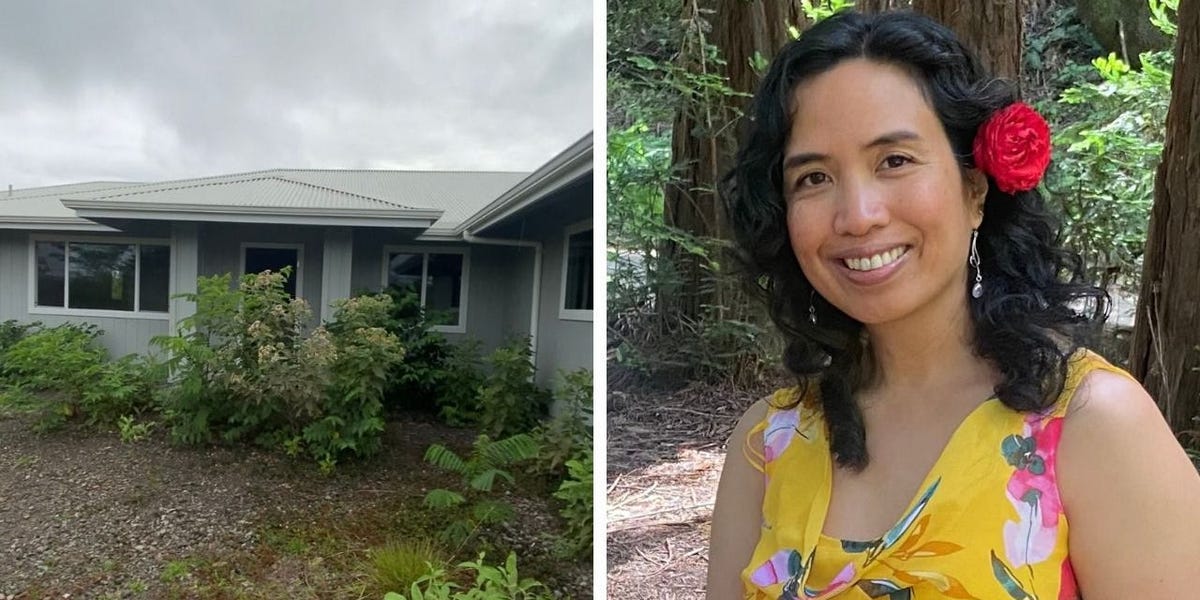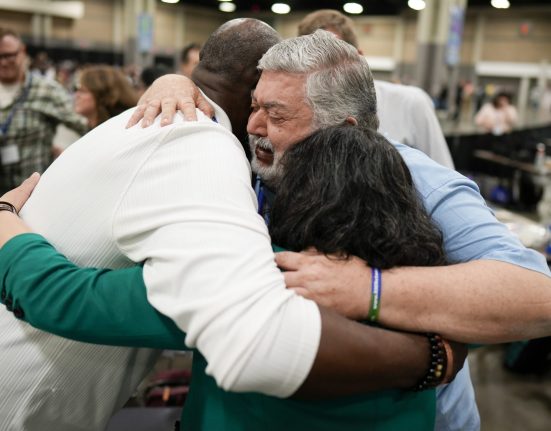- Anne Reynolds purchased a vacant lot in Hawaii in 2018 from a tax auction.
- A developer in Hawaii accidentally built a house on it instead of the neighboring lot.
- She wants the house to be removed and the flora and fauna to be restored. Instead she got sued.
Annaleine “Anne” Reynolds had big plans for a vacant lot she purchased in 2018. Unfortunately, she was beaten to the punch when a developer built a house in it.
Reynolds bought a one-acre plot of land in Hawaiian Paradise Park, a nearly 15,000-person subdivision on Hawaii’s Big Island, for $22,500 at a tax auction. Now, a house — worth just over $500,000, according to Trulia — sits vacant on the land.
“It was so sad — I cried when I saw it,” Reynolds told Business Insider. “It didn’t look like that when I bought it.”
Reynolds, who lives in California, had grand visions for the land and was disturbed when she found out that those plans are going to have to wait a little longer while everything gets sorted out in court.
But she’s in court as a defendant.
“It feels like I did something wrong,” she said.
According to documents verified by BI, Reynolds is being sued by the developer, Keaau Development Partnership LLC, on accusations of unjust enrichment and constructive trust.
Now she’s fighting in court not only to maintain possession of her land, but also remove the house that sits on it and restore the flora and fauna.
How a mistake like this happened
Originally, Reynolds had plans to build a home for her two children on the property and also save space to host women’s retreats.
Reynolds is an energy healer and a relationship coach, and for her, the perfect plot of land was more than just the view or the peace she felt from hearing the waves crashing.
“It needs to align with me with my zodiac sign, basically,” she said. “Also, the position of the land in relation to the stars and north, south, east, and west coordinates, the sun rising and setting — all these things go into consideration.”
Others view these one-acre plots differently.
Dana Kenny, principal broker of Savio Realty Ltd., has been selling property in Hawaii for over 40 years. He told BI that in Paradise Park, unless you’re next to the ocean or the highway, every parcel looks indistinguishable.
“There are 8,000 one-acre lots in Paradise Park,” Kenny said. “If I blindfolded you, and I drove you to Paradise Park and I put you on a street in front of a lot — I’ll give you $10,000 if you could figure out where you were.”
That may be how a mistake like this one happened.
Keaau Development Partnership could not be reached for comment, however, according to a court document prepared by the developer’s lawyer, Peter Olson, the untouched plots in Paradise Park are identified by telephone poles. There are two lots between each telephone pole, and the wrong one was picked.
“The mistake was an accident and not intentional,” the document reads. “It was discovered after construction was complete and during the process of selling.”
The document also states that Keaau Development Partnership offered Reynolds an exchange of lots: She gets the undeveloped lot next door, and they keep the one with the already built house on it.
She said no.
“The land was special to her,” James DiPasquale, Reynolds’ attorney, told BI. “Its placement was special to her, and she simply wants it back.”
A complete restoration would take a great deal of time and money
In a motion for preliminary injunction and temporary restraining order filed by DiPasquale, Reynolds requested that the already built home be removed, and that the land be restored to its “natural state prior to the wrongful construction.”
That’s easier said than done, according to Kenny.
“So you want me to tear the house down — so I tear the house down,” he explained, theoretically. “Then I’ve got to rip up the slab. There’s a water catchment system with a foundation for it — I’ve got to rip that up. Then I’ve got to dig into the ground and pull up the septic tank system and the leach field that was installed.”
“I’ve got to remove the cinder that was laid out on top of the ground down to where the lot was bulldozed to the actual rock on the bottom,” Kenny continued. “Then I’ve got to undo the bulldozer job. Now that’s impossible, but let’s say she says that’s okay. She wants me to put the foliage and fauna back. Well, this is a one-acre lot. It’s 135 feet wide, 325 feet deep. Where were the trees?”
Kenny estimates a project like that would cost close to $1 million to execute. The home only cost about $300,000 to build, but, as it stands now, Reynolds is footing the bill for the property taxes — since she owns it.
Property records show that the taxes on the lot grew from $299.20 in 2018, the year Reynolds purchased the property, to $2,019.60 in 2023. Taxes on the neighboring, undeveloped lot were $654.50 in 2023.
Reynolds just wants her land back
While not intentional, DiPasquale believes that this mistake could set a harmful precedent for matters like this in the future.
“Do I think that we’re going to have a situation where developers start bullying and basically seeing random swaths of land and say, ‘Hey, listen, I’m going to go ahead and try and develop it,’ I doubt that’s going to necessarily happen,” he said. “But I think a more common violation would be something along the lines of encroachment, or basically claiming that they were unaware of where their boundary lines fell — they built well over into another property and they’re basically just saying it was an accident.”
Reynolds remembers the lush greens, beautiful flowers, and the proud Ohia Lehua trees that have since been removed from her land. Still, she’s hopeful that one day they’ll return as they once were.
“It felt like when you go into a sanctuary — it was really gorgeous and I could really feel the land it was just calling out to me,” she said. “I know that for Hawaiians the land is sacred — there’s a sanctity to the land, and it must be revered and respected. We showed the same reverence and respect for the land.”






